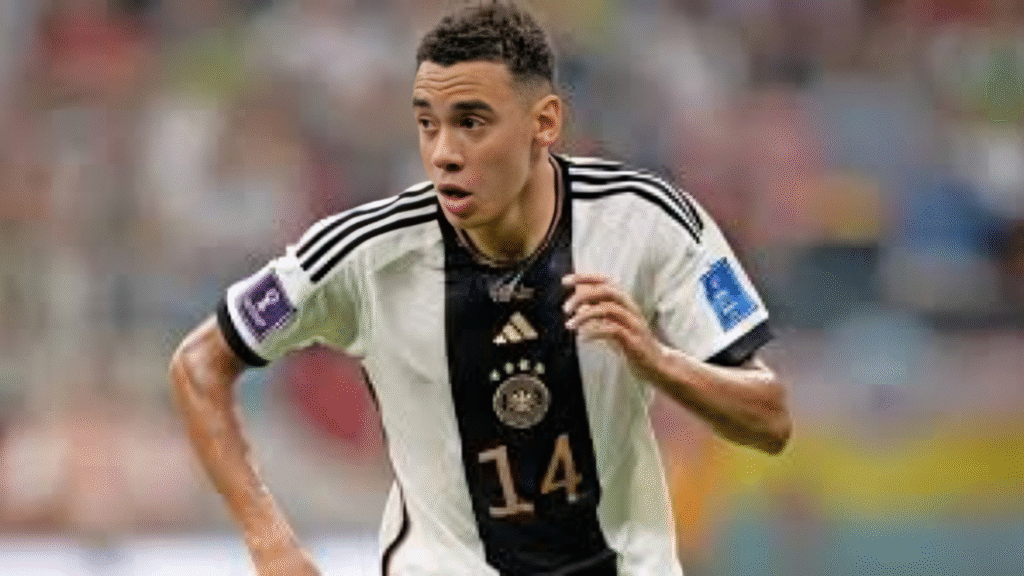When it comes to the thrill of international soccer, nothing quite matches the spectacle of the FIFA World Cup, where fußball-wm spieler take center stage and captivate millions around the globe. These athletes aren’t just players; they’re the heartbeat of the tournament, showcasing skill, passion, and teamwork under the brightest lights. Imagine the roar of the crowd as a fußball-wm spieler weaves through defenders, or the tension building as they line up for a crucial penalty kick. It’s moments like these that make the World Cup unforgettable. As an expert in soccer history and player development, I’ve spent years analyzing matches, interviewing coaches, and studying the journeys of these stars. In this article, we’ll dive deep into the world of fußball-wm spieler exploring their history, roles, and the bright future ahead. Whether you’re a young fan dreaming of the pitch or a seasoned enthusiast, there’s plenty to get excited about here.
The World Cup, held every four years since 1930, brings together the best talents from every corner of the earth. Fußball-wm spieler represent their nations with pride, often becoming national heroes overnight. From Pelé’s dazzling dribbles in the 1950s to Messi’s triumphant lift of the trophy in 2022, these players embody the spirit of the game. And with the next tournament set for 2026 across North America, the stage is primed for new [fußball-wm spieler] to shine even brighter.
The Evolution of fußball-wm spieler
Over the decades, fußball-wm spieler have evolved dramatically, mirroring changes in tactics, fitness, and global soccer culture. Back in the early days, the game was more about raw endurance and basic skills, but today, it’s a blend of science, strategy, and sheer athleticism. Think about it—players now cover up to 10 kilometers per match, a far cry from the leisurely paces of the 1930s.
In the beginning, the World Cup featured amateur athletes who juggled day jobs with training. Uruguay’s 1930 winners, for instance, were mostly local heroes without the glossy sponsorships we see now. As the tournament grew, so did the professionalism. By the 1950s, Brazil’s fußball-wm spieler like Pelé introduced flair and creativity that changed everything. Fast forward to the 21st century, and we’re talking about data-driven training and video analysis that help fußball-wm spieler anticipate opponents’ moves.
This evolution hasn’t been without challenges. Injuries, intense schedules, and the pressure of representing a nation can weigh heavy, but optimism prevails. Modern fußball-wm spieler are fitter, faster, and more versatile, paving the way for even more exciting tournaments ahead. It’s heartening to see how the role has grown, turning these players into global icons who inspire kids everywhere to lace up their boots.
Legendary fußball-wm spieler from Early Tournaments
Let’s kick things off with the pioneers—the fußball-wm spieler who laid the foundation for the World Cup’s magic. These early legends turned a simple game into a worldwide phenomenon, often with limited resources but boundless heart.
Take Pelé, the Brazilian wizard who won three World Cups (1958, 1962, and 1970). At just 17, he scored six goals in 1958, including a stunning header in the final against Sweden. His grace on the ball was like poetry in motion, dazzling fans and setting records that still stand today. Then there’s Diego Maradona from Argentina, whose 1986 heroics are stuff of legend. That infamous “Hand of God” goal against England? Controversial, sure, but it showed his cunning. Moments later, he slalomed past five defenders for what many call the “Goal of the Century.” Maradona’s passion fired up a nation and proved that fußball-wm spieler can be both geniuses and rebels.
Don’t forget Franz Beckenbauer of Germany, the “Kaiser” who redefined defending in the 1970s. He swept up attacks with elegance and even joined the offense, helping West Germany to the 1974 title. These early fußball-wm spielers weren’t just athletes; they were innovators. Their stories remind us that greatness often starts with a dream and a dusty ball in a backyard.
- Pelé’s Impact: Revolutionized attacking play with his vision and speed.
- Maradona’s Flair: Brought street-smart skills to the international stage.
- Beckenbauer’s Vision: Transformed the libero role into an art form.
Looking back, these figures built the legacy that today’s fußball-wm spieler build upon, and it’s exciting to see how their influence lingers.
Stars of the Modern Era in fußball-wm spieler
Fast-forward to the 2000s and 2010s, where fußball-wm spielers like Lionel Messi and Cristiano Ronaldo have elevated the game to new heights. Messi’s 2022 triumph with Argentina was the cherry on top of a career filled with World Cup wizardry—seven goals and three assists in Qatar sealed his status as one of the all-time greats.
Ronaldo, Portugal’s talisman, holds the record for most World Cup goals by a European player with eight. His 2018 heartbreak against Uruguay only fueled his fire, showing the resilience that defines modern fußball-wm spieler. And who can forget Zinedine Zidane? The French maestro’s 1998 double headers in the final against Brazil turned the tide, but his 2006 headbutt added a human touch—flawed, yet unforgettable.
Women have shone brightly too, though the men’s tournament often steals the spotlight. Stars like Marta from Brazil have multiple World Cup appearances under their belt, scoring 17 goals and inspiring a generation. These modern fußball-wm spielers blend technical brilliance with mental toughness, making every match a potential classic. It’s optimistic to think that with streaming and social media, their influence reaches even further, motivating young talents worldwide.
In a table below, here’s a quick comparison of some modern icons:
| Player | Nation | World Cups Won | Notable Achievement |
|---|---|---|---|
| Lionel Messi | Argentina | 1 (2022) | Golden Ball 2022, record assists |
| Cristiano Ronaldo | Portugal | 0 | All-time top international scorer |
| Zinedine Zidane | France | 1 (1998) | Final-winning headers in 1998 |
| Marta | Brazil | 0 | Most World Cup goals by a woman |
These fußball-wm spielers aren’t just winning trophies; they’re rewriting history with style.
Key Positions and Roles Among fußball-wm spieler
Every team needs a balanced squad, and fußball-wm spieler fill crucial positions that make the World Cup tick. Understanding these roles is like peeking behind the curtain of a well-oiled machine—each part essential for success.
Goalkeepers, the last line of defense, must be brave and quick. Think Lev Yashin, the Soviet “Black Spider,” who won the 1963 Ballon d’Or as the only keeper ever. Defenders, like Italy’s Paolo Maldini, anchor the backline, tackling threats and starting attacks. Midfielders control the tempo—defensive ones like Germany’s Lothar Matthäus shield the goal, while attacking maestros like Brazil’s Ronaldinho create magic.
Forwards are the finishers, poaching goals with precision. Miroslav Klose, Germany’s record World Cup scorer with 16 goals, was a master of this art. In today’s game, positions blur; wing-backs overlap, and false nines drop deep. This fluidity demands versatile fußball-wm spielers who can adapt on the fly.
- Goalkeeper: Commands the box, saves penalties under pressure.
- Defender: Blocks shots, reads the game like a book.
- Midfielder: Links defense to attack, dictates play.
- Forward: Scores the winners, celebrates with flair.
It’s encouraging how coaches now emphasize all-around skills, ensuring fußball-wm spieler are ready for anything the tournament throws their way.
Training Regimens for Aspiring fußball-wm spieler
Becoming a top fußball-wm spieler isn’t luck—it’s sweat, strategy, and smarts. Training for the World Cup is intense, starting months in advance with personalized plans that build stamina, speed, and skill.
Teams kick off with fitness tests to spot strengths and weaknesses. Endurance runs mimic match demands, while agility drills sharpen quick turns. Soccer-specific sessions focus on ball control—dribbling through cones or heading under pressure. Strength training, like squats and lunges, prevents injuries and boosts power for those explosive sprints.
Mental prep is key too. Visualization techniques help fußball-wm spielers stay calm in high-stakes moments, and team-building exercises foster unity. Nutrition plays a huge role—balanced diets with proteins and carbs fuel the body. Recovery? Ice baths and yoga keep players fresh.
For young hopefuls, it’s about consistency. Join local clubs, practice daily, and study greats. As someone who’s coached youth teams, I can say the path is tough, but rewarding. With the right regimen, anyone can aim for fußball-wm spielers stardom, and the 2026 edition promises fresh opportunities.
Iconic Moments Created by fußball-wm spieler
Ah, the moments that make you jump from your seat—these are the gifts from fußball-wm spielers that etch the World Cup into eternity. From underdog triumphs to sheer brilliance, they’ve delivered pure joy.
Maradona’s 1986 solo run against England? A fußball-wm spieler at his audacious best, beating half the team before slotting home. Geoff Hurst’s hat-trick in 1966, including that controversial shot that crossed the line (or did it?), sealed England’s only win. And Zidane’s headbutt in the 2006 final? Dramatic, yes, but it humanized the pressure these players face.
More recently, Mbappé’s hat-trick in the 2022 final against Argentina turned a loss into legend for France. Roger Milla’s corner-flag dances for Cameroon in 1990 brought African flair to the forefront. These instances aren’t just plays; they’re stories of courage and creativity.
- Hand of God (1986): Maradona’s cheeky equalizer.
- Hurst’s Ghost Goal (1966): The debated decider.
- Mbappé’s Comeback (2022): A young gun’s defiance.
What ties them together Fußball-wm spieler who seize the moment, reminding us why we love the game so much.
The Global Impact of fußball-wm spieler
Fußball-wm spieler do more than score goals; they bridge cultures, spark economies, and drive social change. In a divided world, these athletes unite billions, proving soccer’s power as a universal language.
Economically, the World Cup boosts host nations—stadiums built, tourism surges. But the real magic? Inspiration. Pelé’s rise from poverty motivated slum kids in Brazil; Messi’s journey encourages underprivileged youth globally. Off the pitch, fußball-wm spieler like Ronaldo use their fame for charity, funding schools and hospitals.
Politically, they’ve been symbols of hope. South Africa’s 2010 hosting showed unity post-apartheid. Women’s fußball-wm spieler are breaking barriers too, with stars like Alex Morgan advocating for equality. It’s optimistic—soccer fosters peace, and these players are at the forefront, making the world a little smaller and brighter.
Emerging Talents: Future fußball-wm spieler for 2026
Excitement is building for 2026, hosted by the USA, Canada, and Mexico—the first with 48 teams! Emerging fußball-wm spielers are gearing up to steal the show, blending youth with world-class potential.
Jude Bellingham of England, already a midfield dynamo at Real Madrid, could dominate with his vision and power. Spain’s Lamine Yamal, a teenage winger with blistering pace, dazzled at Euro 2024 and eyes World Cup glory. France’s Warren Zaïre-Emery, a versatile teen, brings composure beyond his years. From Portugal’s João Neves to Egypt’s Omar Marmoush, these talents promise diversity and drama.
Dark horses like Desire Doué from France add unpredictability. With expanded rosters, more fußball-wm spieler will get chances to shine. As an observer of rising stars, I’m thrilled—the future looks golden, full of fresh faces ready to make history.
Challenges Faced by fußball-wm spieler
No path to glory is smooth, and fußball-wm spieler grapple with hurdles that test their mettle. Injuries, for one, can sideline stars mid-tournament—remember Ronaldo’s 1998 seizure? Mental strain from expectations weighs heavy, leading to burnout.
Cultural clashes in diverse squads require diplomacy, and the grueling schedule leaves little recovery time. Yet, optimism shines through. Advances in sports science, like cryotherapy, help mitigate risks. Support systems—psychologists, family—keep players grounded.
These challenges build character, turning good fußball-wm spielers into great ones. It’s inspiring to see resilience in action, proving that with grit, any obstacle can be overcome.
Conclusion
As we wrap up this journey through the world of fußball-wm spieler, it’s clear these athletes are the soul of the FIFA World Cup. From the legends of yesteryear to the rising stars eyeing 2026, they’ve woven tales of triumph, heartbreak, and unity that resonate far beyond the pitch. Their evolution, roles, training, and impacts show a sport that’s constantly growing, much like the dreams they inspire.
Whether it’s Pelé’s flair or Yamal’s promise, fußball-wm spieler remind us that with passion and perseverance, anything’s possible. So, lace up, cheer loud, and get ready—the next chapter of fußball-wm spieler greatness is just around the corner, brimming with hope and excitement.


